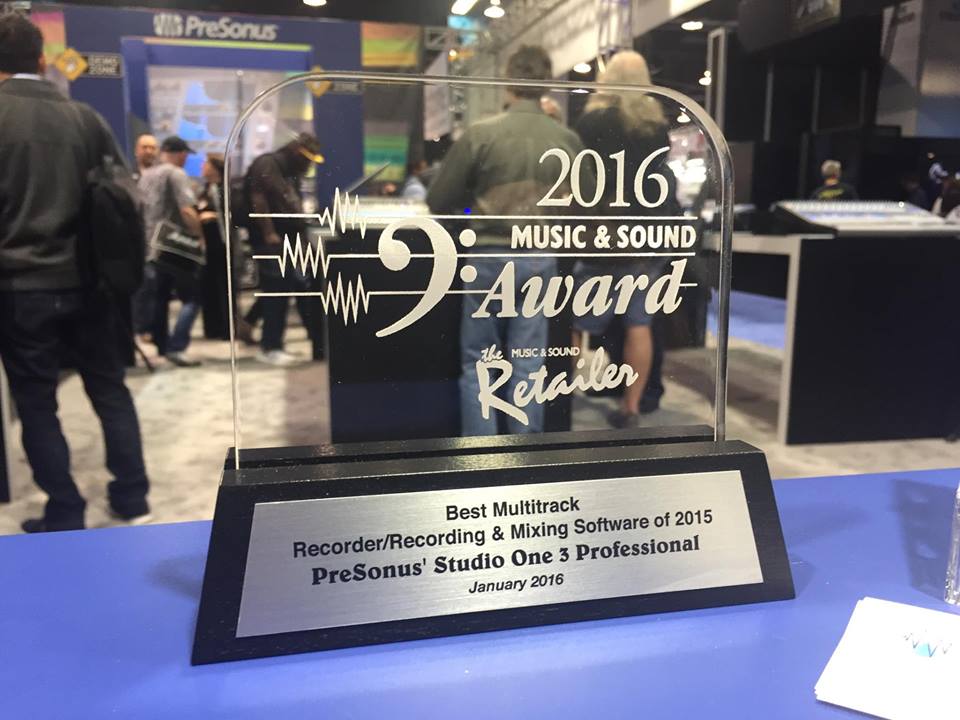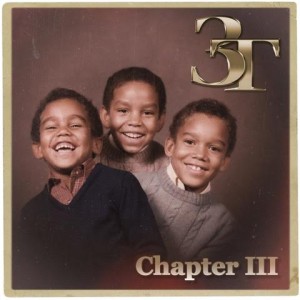Category Archives: Studio One
Studio One 3 Professional Wins Software Award at NAMM2016
Big thanks to Music and Sound Retailer for this recognition at NAMM 2016. While the award bears MSR’s name, Studio One 3 Professional was chosen by music dealers who voted it to be the best of the year. We’re honored, and you all are too kind. To learn more about Studio One 3, click here.
Studio One User Sets up Shop in California Starbucks
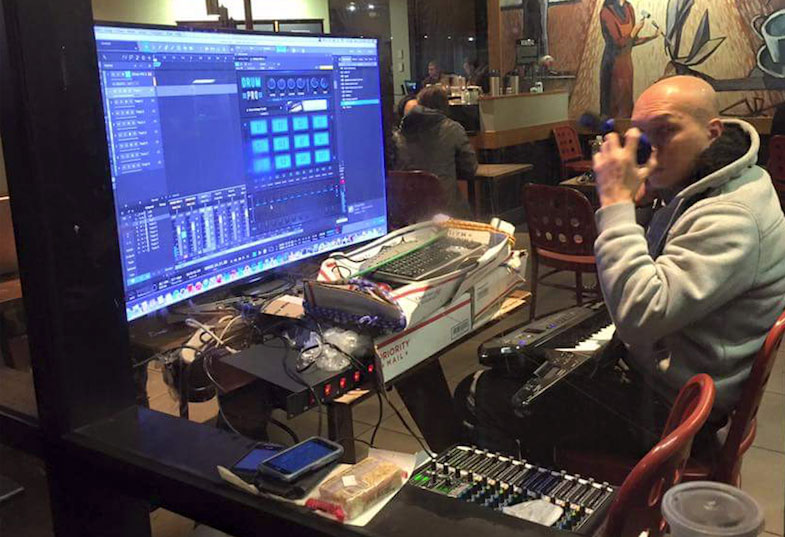 Ever bring your laptop to a coffeeshop to work on your music outside the house? It’s a known fact that a change of environment can do a lot for your creativity.
Ever bring your laptop to a coffeeshop to work on your music outside the house? It’s a known fact that a change of environment can do a lot for your creativity.
But check out this guy. Go big or go home, am I right? This dude set up his Studio One rig at a Starbucks in California, complete with a huge curved monitor, mixer, power conditioner, MIDI keyboard controller, computer, two cell phones, a pack of fig newtons (I think) and several Priority Mail boxes.
Anybody know this guy?
Credit to dmizz over on Reddit for posting the photo. Click here for the original thread.
Review Of The E-Instruments eBass Complete Bundle from Studio One Expert
You can get the e-bass add-ons via our online store. Click here to shop.
Now Available: Nori Ubukata—20th Century Synth Box Vol. 1
We’ve got a new Mai Tai preset collection for Studio One 3 Artist and Professional! Take a trip back in time with Nori Ubukata’s 20th Century Sound Box and rediscover the legendary analog sounds of the 70s and 80s. Famed Japanese sound designer and synth/theremin artist Nori Ubukata recreated some of the most memorable sounds by electronic music artists such as Kraftwerk, Tangerine Dream, Vangelis and Wendy Carlos. The set contains a total of 111 presets and Instrument+FX presets (adding reverb, EQ and other effects). Also included are 50 Musicloops with sound elements showcasing the best presets in musical context.
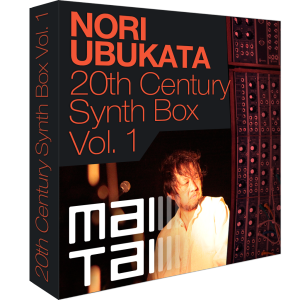
Click here to buy it from our online store.
Free: Recording in Studio One Made Easy
Getting started with home recording just got a whole lot easier this holiday season. Purchase any PreSonus audio interface and register it at my.presonus.com before January first and you will receive the Recording in Studio One Made Easy course from Home Recording Made Easy.
Home Recording Made Easy will teach you on how to do everything from hooking up your hardware to your computer, recording an entire song using a modest recording studio set-up and finally mixing that song using the tools in Studio One.
This series is nearly 3 hours in length and has 10 video sections. Whether you have switched from another DAW to Studio One or if you are brand new to home recording this series is for you. This is also the perfect enhancement when giving the gift of recording this Holiday Season.
Introducing the eBass Add-ons for Studio One 3
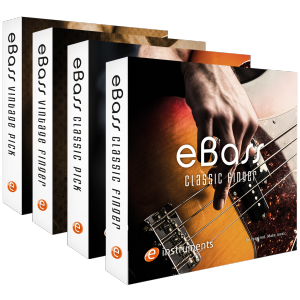 [This just in from Thomas Koritke of e-instruments, who shared some valuable insights on the creation of our new eBass Add-ons for Studio One 3! These sample packs include VERY meticulously sampled recordings of a 1975 P-Bass in various styles. They’re available for all editions of Studio One 3: Artist, Professional, and Prime, and can be purchased on shop.presonus.com website or directly from inside Studio One.]
[This just in from Thomas Koritke of e-instruments, who shared some valuable insights on the creation of our new eBass Add-ons for Studio One 3! These sample packs include VERY meticulously sampled recordings of a 1975 P-Bass in various styles. They’re available for all editions of Studio One 3: Artist, Professional, and Prime, and can be purchased on shop.presonus.com website or directly from inside Studio One.]
We are really happy to see our eBass released! I hope the following gives you some valuable information on our instruments.
We recorded a 1975 Precision Bass in a studio here in Hamburg—actually the same studio that we used to record our Session Strings, Session Horns and Session Keys instruments. It is one of the few facilities left with a large and great sounding room.
We used a Millenia TD-1 tube channel for the Vintage Bass instruments, and an Avalon DI preamp for the Classic Bass. We also recorded the bass via an Ampeg SVT top with 112 speaker, just as a sound reference. However, we ended up using only the DI signals for our eBass instruments. The DI signal provides great flexibility for additional processing with amp simulators and EQ, so the reference amp recording was a tremendous help when we designed the Instrument+FX presets—we could always compare them to the real thing. Strings were medium 045-105 round-wound for the classic and the same gauge flat-wound strings for the vintage. The pickup set was the original from 1975.
The bass was performed by a completely unknown, but extremely patient bassist here from Hamburg. Sampling requires a very special skill set and what we ask a musician can be quite hard or boring for a famous virtuoso. The player has to be able to have great control over dynamics and sound as well as keeping a certain dynamic throughout the entire tonal range. He has to be very patient and controlled, should not produce any noise, should not move, and has to repeat notes several hundred times… it’s a painful process, but it’s worth it: with both flatwound and roundwound strings and two playing styles—pick and finger—for each string type, eBass provides THE classic Precision Bass sounds.
Despite the previously mentioned attention to details, I think the most interesting part of the product is in its scripting, sound design, and music loops. Our goal is to provide very flexible and easy to use great sounding bass sounds. As such, we designed these Add-ons with presets for different use cases. Some people love to perform a bass line on a keyboard. The performance presets are designed specifically for that. They include an intuitive legato function (legato on the same string–within a fourth interval), velocity switching for dead notes or harmonics, pitch bend control to trigger slides and hammer-on/pull-offs and even control over the left hand position on the neck via mod wheel. All articulations are instantly available.
Other producers are used to selecting different articulations via key switches. We have created the production presets for them. Here, all articulations are accessible via dedicated keyswitches. The production presets also feature left hand position control via mod wheel. Both preset types are available as “dry” Presence XT presets, or as Instrument+FX presets including a chain of Ampire, EQ and Compressor.
Finally, some musicians may just need some inspiration or use an existing bass line and modify it. Each eBass includes Musicloops in different styles, genres and complexity levels – from fairly basic to quite busy. They all come with a dedicated effects chain setting to match that specific style or genre.
All the best,
Thomas Koritke
e-instruments
Jake Owen: on the Road with PreSonus!
Jake Owen is in the enviable stage of his career where he can work with whatever gear he wants. As such, we’re flattered that he’s taking a complete PreSonus recording rig on his tour bus that includes Studio One, Sceptre Monitors, ADL preamps, and much more. Any musical idea that his band has during impromptu jams can be recorded right on the road, without needing to stop in a recording studio!
For more on Studio One, click here.
Willem Rebergen, AKA Headhunterz, Chooses Studio One 3
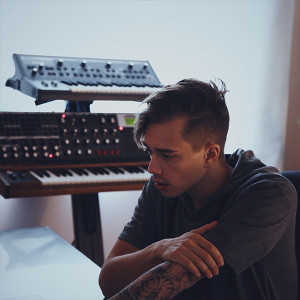 CNN recently reported that “Electronic Dance Music (EDM) is a $6.2 billion industry” and “the fastest-growing music genre out there.” Through cult-like followings on social media, hundreds of worldwide festivals, radio airplay, and collaborations with pop artists, EDM artists continue their foray into and beyond the mainstream.
CNN recently reported that “Electronic Dance Music (EDM) is a $6.2 billion industry” and “the fastest-growing music genre out there.” Through cult-like followings on social media, hundreds of worldwide festivals, radio airplay, and collaborations with pop artists, EDM artists continue their foray into and beyond the mainstream.
One of these artists is Willem Rebergen, better known to his 172,000+ followers on Instagram as DJ Headhunterz. Rebergen kicked off his career in 2006 as a DJ and music producer, and quickly grew into one of the biggest names in the industry, recently performing at several major festivals, including Electric Daisy Carnival and Tomorrowland.
After eight years making hardstyle music, Rebergen was ready to tackle a new challenge. “Right now I’m translating my signature sound to something a bit different from what I used to do but I don’t necessarily want to settle in a single genre anymore,” he states. “I want to feel free to go where my heart wants to go. Everything changes—and so does my personal taste, so listening to that is the only way for me to keep tapping into my full creative potential. Who knows what I might make tomorrow?”
We recently chatted with Rebergen about where he wants to take his music, his creative process, and working with Studio One. “I have been using Studio One for about two and a half years now and I am currently on version 3,” Rebergen states. “I make EDM, so I would say I use Studio One for composing and sound designing. I basically use it for anything necessary to produce a song.”
A longtime Logic user, Rebergen was turned on to Studio One by a recommendation of a very wise friend. He was immediately hooked. “I had been on Logic for years, but became unsatisfied with the lack of development of the software since Apple bought it. I felt it got behind compared to other more forward-thinking companies making DAWs,” he asserts. “I tried Ableton but that wasn’t exactly what I was looking for either. I was excited to give Studio One a go—I’m always eager to test new software, I’ve always been kind of a nerd, honestly. Looking for the next thing that improves workflow or sound quality. Studio One immediately felt natural to me, it really didn’t take me long to get used to, and I think especially for people coming from either Logic or Cubase it will feel very intuitive right away.”
“When I started using Studio One, I was very happy to feel back in control of my audio editing. The cutting tool felt very “direct,” and I loved the slip editing tool which I didn’t have before. Automation was as tight as it could get, and very quick and convenient—which was also one of the reasons for my switch. That is how automation should be! When you make electronic music I often want to be very surgical with drawing in automation, and Studio One simply allows for this at all times, even under the pressure of latency-inducing plugins. Latency compensation is always on point!”
Another feature that made me fall in love with Studio One was Track Transform. It’s so much more flexible than in any other DAW that I know of, and opens up a whole new spectrum of working with content that otherwise would be literally frozen and untouchable.
“Furthermore, I have been working more quickly in Studio One than ever before. The browser changed my way of working completely, and motivated me to create a perfect personal library where all my hard work is stored and ready to put back into action. When I create a sound in a soft synth, I create a Musicloop by dragging it into my browser. This saves not only the synth preset, but also the MIDI sequence and effect Plug-ins. It even lets me play a preview when I select it in my browser, so I know exactly what I’m about to drag into my project. I could not think of a more convenient way to browse through my self-made sounds.”
“All of these functions have made it possible for me to feel much more creative while being in the actual creative process, and not being pulled out of it by having to search endlessly for that particular sound I’m looking for, or having to work around functions that are not doing what I want.”
“I also create a lot of macros to improve my workflow, I’m totally in love with the new arranger and scratchpad function which allows for me to be much quicker and intuitive when arranging my songs without making a mess.”
As a full-time producer, Rebergen’s working knowledge of Studio One runs deep. When pressed for workflow details, he’s much more open than many of his peers. “I recommend that Studio One users make full use of the Browser and the Musicloops,” he opines. “When I finish a song, I completely undress it and save all sounds I made in the form of channel presets, Musicloops, and audio files. With every song I make, my library expands—and whenever I’m in the creative process I can recall any sound I am looking for without having to get into sound designing or endlessly searching through sample libraries. I make sure that every sound I save in MY library is on point, so they rarely need a lot of tweaking to fit into a song and I can just get on with concentrating on the creative part.”
He’s also taken advantage of using other, prehaps modest applications in conjunction with Studio One to accellerate his already blazing workflow. “I keep an app open alongside Studio One called Sticky Notes. I type down all my newly-made key commands—yes, I constantly make new ones! I then force myself to use them all the time so they become a natural part of my workflow. Customizable key commands make everything so much quicker, and Studio One allows for using them for almost anything.”
“Studio One invites us to have the best workflow we have ever had,” Rebergen continues. “I can’t believe I had been able to keep up with making new songs in the total mess I was working in when I used Logic. With every update, PreSonus puts out come fantastic new features which shows that the team is eager to keep pushing forward. They actually listen to what users want, and notice what users have been missing out on while working with other software. Coming from Logic, Studio One it gave me much better audio editing, better automation, more overview, a better overall workflow. I could keep going…”
And going he is. Rebergen has his hands in a lot of different projects apart from his own. “Currently, I have a collaboration out with R3hab called “Won’t Stop Rocking” on Spinnin Records. Other songs I have released this year are: “Live Your Life” with Crystal Lake and “The Power Of Now” with Steve Aoki. And, of course, some solo tracks, as well.”
Rebergen closes with a shout-out to the PreSonus krewe. “Team PreSonus has the perfect mindset to create the perfect DAW. In my opinion it already is the best DAW out there, and it’s going to get even more awesome, I’m sure. I’m beyond grateful to have Studio One in my life!”
Metric Tonne of Studio One Add-ons Added-on to shop.presonus.com
We’ve recently released a lot of loop content for Studio One. It’s all available exclusively at shop.presonus.com. We’ve got a little something for everybody—especially if you’re making hip-hop or electronic music of nearly any flavor, including Indian Dubstep, we’ve got a loop pack for you. Click on any of the titles below to learn about the packs, hear audio demos, and download! (You can also buy them directly from within Studio One 3.)
 From EarthMoments, we’ve got the Desert Oud; an ancient Iraqi instrument, Dubstep India; a blend of wub-wub basses with acoustic Indian instrumentation; and the Pure India bundle, which is a bundle of three packs that include gigabytes of traditional instruments, percussion samples, and vocals.
From EarthMoments, we’ve got the Desert Oud; an ancient Iraqi instrument, Dubstep India; a blend of wub-wub basses with acoustic Indian instrumentation; and the Pure India bundle, which is a bundle of three packs that include gigabytes of traditional instruments, percussion samples, and vocals.
 SampleMagic has been very prolific of late, covering all the basses. The most notable bass, of course, is the TB-303 in their Acid House pack. Further packs include the tape-echo saturated Future Dub; the stomping UK Garage of Future House; and the bevy of classic vintage Roland and LinnDrum hardware samples in New Wave. Ibiza-worthy Melodic Deep House and Festival Anthems round out the set. The details of these packs are too numerous to list in the blog, here, but click through any of the titles to learn more about the packs themselves. SampleMagic had planned to release a Vaporwave sample pack, but then this happened, effectively beating them to the punch.
SampleMagic has been very prolific of late, covering all the basses. The most notable bass, of course, is the TB-303 in their Acid House pack. Further packs include the tape-echo saturated Future Dub; the stomping UK Garage of Future House; and the bevy of classic vintage Roland and LinnDrum hardware samples in New Wave. Ibiza-worthy Melodic Deep House and Festival Anthems round out the set. The details of these packs are too numerous to list in the blog, here, but click through any of the titles to learn more about the packs themselves. SampleMagic had planned to release a Vaporwave sample pack, but then this happened, effectively beating them to the punch.
 MVP has brought in five new packs bristling with pure hip-hop bombast—but that’s not all. The Trevor Lawrence Jr.-produced Sound Squad offers nearly 2 gigs of hip-hop, EDM, R&B, and pop elements. Mix and match them to make your own styles! Sound Gang offers loops, riffs, and one-shot samples for modern urban production. is another modern hip-hop kit full of big drums and grimy synths, as do Magnaa Carter: Reloaded and OVXO Vol 2. Hook City Platinum Edition rounds out the offerings with an R&B and Soul-tinged vibe, produced by first-call musicians, writers, and engineers.
MVP has brought in five new packs bristling with pure hip-hop bombast—but that’s not all. The Trevor Lawrence Jr.-produced Sound Squad offers nearly 2 gigs of hip-hop, EDM, R&B, and pop elements. Mix and match them to make your own styles! Sound Gang offers loops, riffs, and one-shot samples for modern urban production. is another modern hip-hop kit full of big drums and grimy synths, as do Magnaa Carter: Reloaded and OVXO Vol 2. Hook City Platinum Edition rounds out the offerings with an R&B and Soul-tinged vibe, produced by first-call musicians, writers, and engineers.
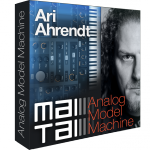 While not technically a loop pack, we’d be remiss to overlook the Analog Model Machine for Mai Tai. 200 synth presets lovingly crafted in the mold of Vangelis, Jean Michel Jarre, and more, from our very own Ari Ahrendt, Quality Assurance Specialist at PreSonus Software. You can get your Klaus Schulze on without devoting a room of your house to expensive analog electronics.
While not technically a loop pack, we’d be remiss to overlook the Analog Model Machine for Mai Tai. 200 synth presets lovingly crafted in the mold of Vangelis, Jean Michel Jarre, and more, from our very own Ari Ahrendt, Quality Assurance Specialist at PreSonus Software. You can get your Klaus Schulze on without devoting a room of your house to expensive analog electronics.
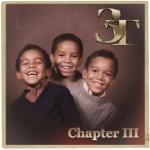
Taryll Jackson Chooses Studio One 3 Professional For New Album, Released Today!
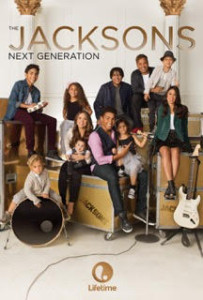
Passion for music and the last name Jackson go hand in hand. For Taryll Jackson, this passion is fueled by surrounding himself with his loving family, trusting his creative instincts, and utilizing a tool that will not slow down his process. That tool, among many, is PreSonus Studio One 3 Professional.
We recently heard about Jackson’s use of Studio One via Twitter. Flattered, we found it fitting to allow him more than 140 characters to share his thoughts on Studio One.
“I use Studio One 3 for everything,” Jackson reports. “Recording, composing, sound design—I’m using it in my home studio and with my mobile rig. I also use two FaderPorts, an HP60, an ADL 700, a FireBox, and a Central Station.”
Jackson is not stranger to working with multiple DAWs, and when he gives his reasons for choosing Studio One, he’s speaking from experience. “I’ve used pretty much all the DAWs,” he says. “In my opinion, Studio One was built from the user’s point of view and not from a programmer’s. It works exactly how writers, producers, songwriters, engineers would want it to work. I noticed with each DAW it was like they specialized in either audio or MIDI, but not really both. I was looking for a one-stop shop, something that could handle both sides but was also stable. I didn’t want to switch between programs, and most importantly, I wanted to feel inspired to create and get my ideas down as quickly as possible without the software getting in the way.”
When asked what Studio One features he finds most useful, Jackson’s obvious choice is drag and drop. “I think that drag and drop alone saves me so much time. When I’m creating, I don’t want to stop and set up bus channels, auxiliaries and routing. I don’t want to have to search for a plug-in through nested folders and sub-folders; I want stay focused on what I’m trying to create! Being able to drag a Reverb or Delay to a Send and having Studio One do all the work for me keeps my mind where it needs to be—on the idea. What takes other DAWs five steps, Studio One does in two steps—and sometimes one!”
“I can write a song in any DAW and I can produce a song in any of them,” Jackson continues. “For me, it’s about the process, the ease of flow. Studio One is going to work with me and help me get to the finish line quickly. It’s going to be fun and easy. I’ve had sessions with 240 tracks and Studio One still runs flawlessly. With other DAWs, I can’t have that many audio tracks, or it struggles and gives me errors. Studio One is tough to beat.”
Clearly, efficiency and flow are the order of the day in Jackson’s studio—he notes an oft-overlooked feature of Studio One that makes it uniquely his; customizable key commands. “I’m really big on key commands. I set them up the way I like, so I can fly. I believe you have to make it yours. Do what works for you—there is no right or wrong way, there’s just your way. What I love about Studio One is there are so many different ways to get to where you want to go. I think it’s the easiest and most powerful DAW out there. It works with you and your creativity, and not against it.”
The ever-driven Jackson has no plans on slowing down anytime soon. He’s currently working on a solo project, collaborating with other artists, and he and his brothers’ group 3T finished their third album, Chapter III, which is available today! The whole album was recorded on Studio One. Check out their song Fire below.
You can watch it all come together on the docu-series The Jacksons: Next Generation on Lifetime which airs its season finale November 6th.
Jackson closes with some kind words for the PreSonus crew—and the extended forum family.
“Love the company. Love the software. Love the forums and users. I’m excited about the Studio 192 and the new speakers. Studio One is definitely heading in a promising direction.”
“Fire,” from Chapter III:
